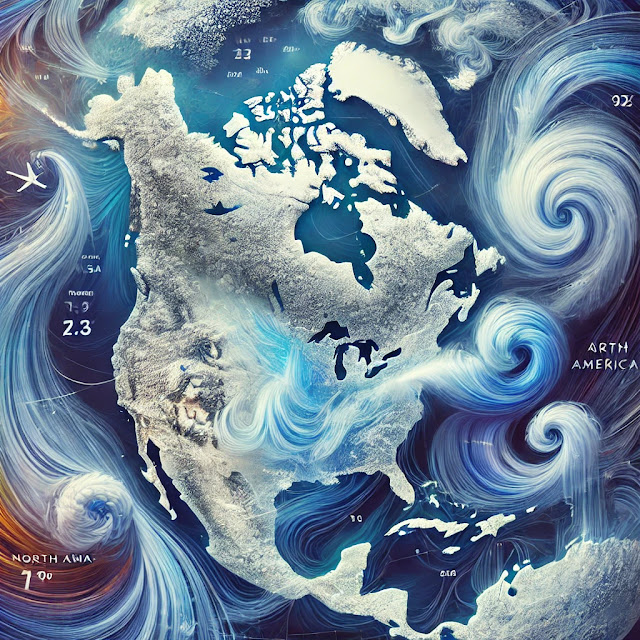The search for Dark Matter and what we have found so far
One of the strangest thing we have learned is that the most of the material
in the universe is made of something entirely different than you and me. But
without it, the universe a we know it wouldn't exist. Everything we can see
with telescopes makes up just 15% of the total mass in the universe.
Everything else, 85% percent of it, doesn't emit or absorb light. We can't
see it with our eyes, we can't detect it with radio waves or microwaves or
any other kind of light. But we know it is there because of its influence on
what we can see. We call this unseen stuff Dark Matter.
Now lot of people have heard of dark matter, but even if you have heard of
it, it probably seems abstract, far away, probably even irrelevant. Well,
the interesting thing is, dark matter is all around us and probably right
there in your room. In fact, dark matter particles are going through your
body right now as you sit in your room.
Because we are on earth and earth is spinning around the sun, and the sun
is hurtling through our galaxy at about half a million miles per hour.But
dark matter doesn't bump into us, it just goes right through us.
How do we figure out more about Dark Matter?
What is it and what does it have to do with our existence? Well, in order
to figure out how we came to be, we first need to understand how our galaxy
came to be. Let's go back to the first moment of universe, just a fraction
of second after the big bang. In this first moment there was no matter at
all.
The universe was expanding very fast. Quantum mechanics tells us that
matter is being created and destroyed all the time, in every moment. At this
time, the universe was expanding so fast that the matter that got created
couldn't get destroyed. Thus we think that all of the matter was created
during this time.
Both the dark matter and normal matter that makes up you and me. Now let's
go a little bit further to a time after the matter was created, after
protons and neutrons formed, after hydrogen formed about 400,000 years after
big bang. The universe was hot and dense and really smooth but not perfectly
smooth.
This image, taken with a space telescope called Planck satellite, show us
the temperature of the universe in all directions. What we see is that were
places that were little bit hotter and denser than others. The spots in this
image represents places where there was more or less mass in the early
universe. Those spots got big because of gravity.
The universe was expanding and getting less dense overall over the last
13.8 billion years. But gravity worked hard in those spots where there was a
little bit more mass and pulled more and more mass into those
regions.
Now all of this is little hard to imagine. Over time , over billions and
billions years, small galaxies crash into each other and merge and grow into
become larger galaxies, like our own galaxy, the Milky way.
What happens if we don't have Dark Matter?
If we don't have dark matter those spots never get clumpy enough. I t
turns out, you need at least a million times the mass of sun in one dense
region, before you can start forming stars. Without dark matter you can
never get enough stuff in one place.
So this crazy stuff, dark matter, is most of the mass of universe, it's
going through us right now, we wouldn't be here without it. What is it?
Well, scientists have no idea right now. But scientists have lot of educated
guesses, and lot of ideas for how to find out more.
Most physicists think that dark matter is a particle, similar in many ways
to the subatomic particles that we know of, like protons and neutrons and
electrons. What ever it is it behaves very similarly with respect to
gravity. But is doesn't absorb or emit light, and it goes right through
normal matter as it was not even there.
We would like to know what particle it is. For example, how heavy is
it? Or, does anything at all happen if it interacts with normal matter?
Physicists have lot of great ideas for what it could be, they are very
creative. But it's really hard because those ideas span a huge range. It
could be as small as the smallest subatomic particles, or it could be as
large as the mass of 100 suns.
So, how do we figure out what it is? Well, physicists and astronomers
have a lot of ways to look for dark matter.
-
One of the things physicists are doing is building sensitive
detectors in deep underground mines, waiting for the possibility that
a dark matter particle, which goes through us and the earth, would hit
a denser material and leave behind some trace o it's passage.
-
They are looking for dark matter in the sky, for the possibility that
dark matter particles would crash into each other and create a high
energy light that they could see with special gamma ray telescope.
-
Physicists even trying to make dark matter here on earth, by smashing
particles together and looking for what happens, using large Hadron
collider in Switzerland.
Now, so far all of these experiments have taught physicists a lot about
what dark matter isn't but not yet what it is. There were really good ideas
that dark matter could have been, that these experiments would have seen.
They didn't seen them yet so physicists have to keep looking and thinking
harder.





Comments
Post a Comment